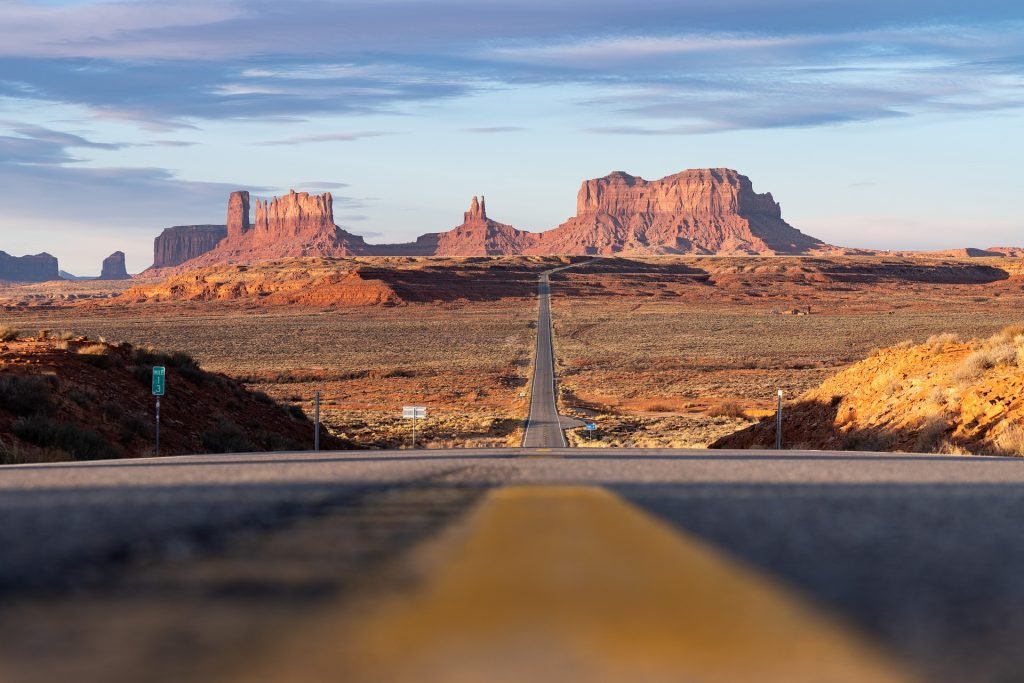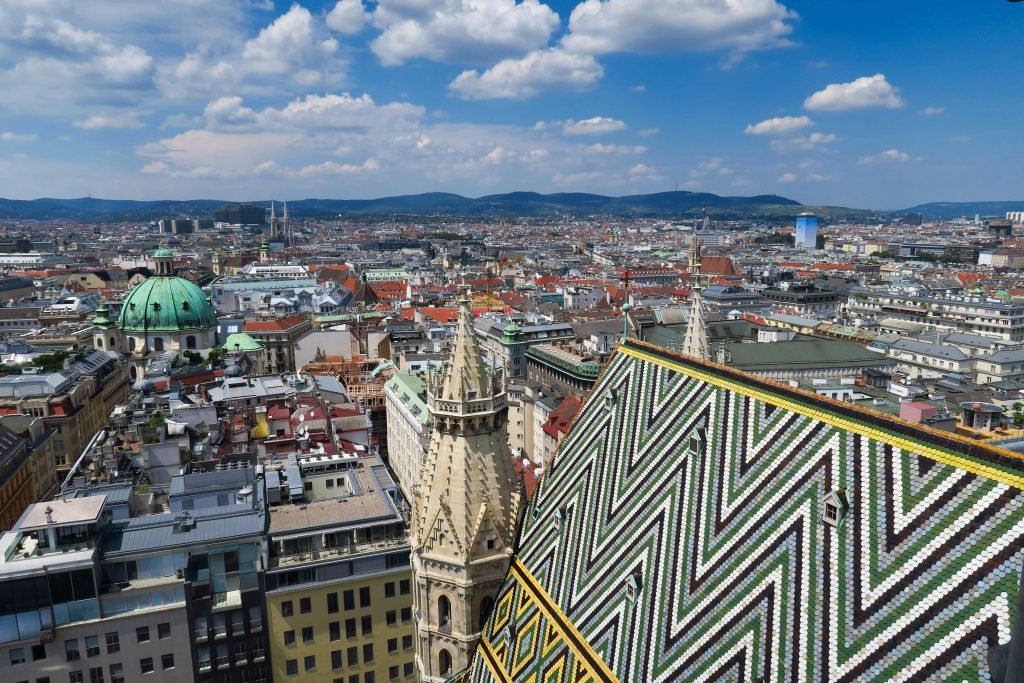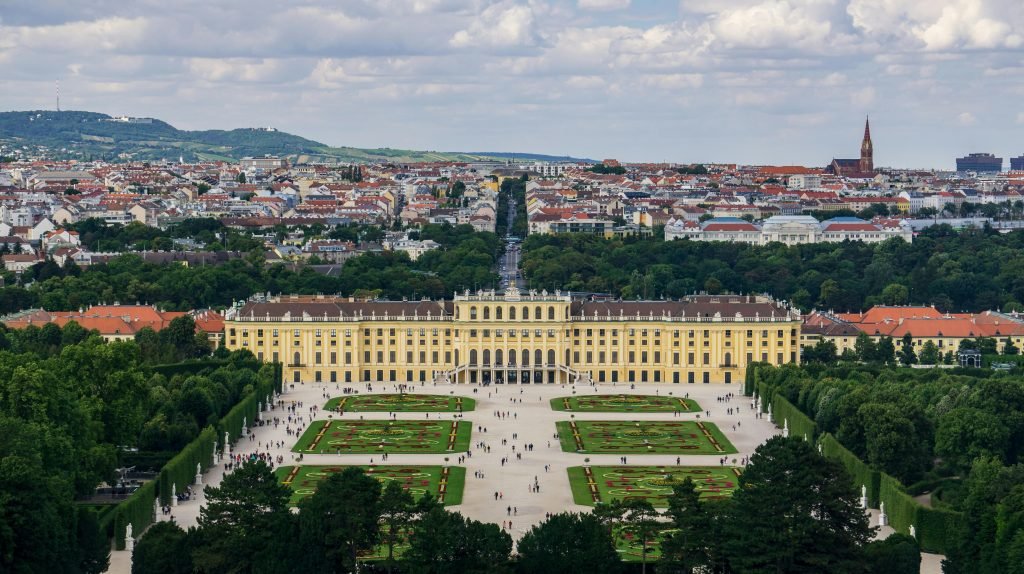Why This Journey Will Change Your Perspective on America
Forget everything you think you know about the United States from movies and social media. The American West Coast isn’t just a destination—it’s a revelation that unfolds across thousands of miles of jaw-dropping landscapes, from sun-soaked beaches to otherworldly desert canyons, from towering sequoias to neon-lit boulevards.
This isn’t your typical European city-hopping adventure where you can cover multiple countries in a weekend. The American West demands time, respect, and a willingness to embrace distances that will initially seem incomprehensible. But trust me—every mile driven will reward you with experiences that no Instagram post could ever capture.
Why Start in Los Angeles?
Let’s be brutally honest: Los Angeles gets a bad rap, and some of it is deserved. The traffic is legendary, the sprawl is overwhelming, and yes, the homeless crisis is visible and heartbreaking. But dismissing LA would be like judging a book by its most controversial chapter.
Beyond the practical consideration that flights from Europe to LAX are often the most affordable given the distance (you’ll typically save €200-400 compared to San Francisco), Los Angeles serves as the perfect introduction to American excess and contradiction. It’s a city where you can grab tacos from a food truck that’s better than most European restaurants, then drive twenty minutes to walk among Hollywood’s manufactured glamour.
The city’s neighborhoods tell different stories: Venice Beach pulses with creative chaos, Beverly Hills whispers old money secrets, and Downtown LA surprises visitors with its genuine urban renaissance. Give LA three days minimum—two to overcome your jet lag and preconceptions, and one to actually fall in love with its chaotic charm.
Days 1-3: Los Angeles (3 days)
Hollywood & West Hollywood
- Hollywood Walk of Fame & TCL Chinese Theatre (2 hours)
- Griffith Observatory for city views (2 hours)
- Sunset Strip evening exploration (2 hours)
- Driving time within LA: 2-3 hours total
Beach Culture
- Santa Monica Pier & Beach (3 hours)
- Venice Beach & Boardwalk (2 hours)
- Malibu coastal drive (2 hours)
- Driving time: 2 hours
Culture & Neighborhoods
- Getty Center (3 hours)
- Beverly Hills & Rodeo Drive (1.5 hours)
- Downtown LA: Walt Disney Concert Hall & Grand Central Market (2.5 hours)
- Driving time: 2.5 hours
San Diego: California Dreaming Made Real
From LA, drive south to San Diego—a two-hour journey that feels like entering a different country. If Los Angeles is America’s complicated relationship with fame and ambition, San Diego is its easy-going younger sibling who chose happiness over status.
Balboa Park alone deserves a full day, housing world-class museums in Spanish Colonial Revival architecture that feels transported from Andalusia. The San Diego Zoo isn’t just a tourist trap—it’s a conservation powerhouse where you’ll witness species preservation efforts that restore faith in humanity’s capacity for good.
But the real magic happens at sunset in La Jolla Cove, where seals lounge on beaches like they own the place (which, honestly, they do). The Pacific here isn’t the aggressive force you’ll encounter further north—it’s warm, inviting, almost Mediterranean in its temperament.
Days 4-5: San Diego (2 days)
Drive from LA: 2.5 hours
Balboa Park & Downtown
- Balboa Park & San Diego Zoo (6 hours)
- Gaslamp Quarter evening stroll (1.5 hours)
- Local driving time: 1 hour
Coastal San Diego
- La Jolla Cove & seal watching (2 hours)
- Sunset Cliffs for dramatic coastal views (1.5 hours)
- Coronado Beach & Hotel del Coronado (2 hours)
- Old Town San Diego historical exploration (2 hours)
- Local driving time: 1.5 hours
Palm Springs & Joshua Tree: Desert Awakening
The drive from San Diego to Palm Springs introduces you to California’s schizophrenic geography. Within two hours, you’ll trade ocean breezes for desert winds and experience your first taste of the American Southwest’s alien beauty.
Palm Springs exists in a time warp where mid-century modern architecture bakes under relentless sunshine, and swimming pools shimmer like mirages against backdrop mountains. It’s simultaneously artificial and authentic—a desert oasis that doesn’t apologize for its existence.
Joshua Tree National Park will challenge every preconception about what constitutes beauty. These twisted, Dr. Seuss-like trees (which aren’t actually trees) create a landscape so otherworldly that you’ll understand why musicians and artists have been drawn here for decades. Camp overnight if possible—the night sky here will remind you how small and magnificent you are simultaneously.
Day 6: Palm Springs & Joshua Tree (1 day)
Drive from San Diego: 2.5 hours
Full Day Desert Experience
- Palm Springs downtown & aerial tramway (3 hours)
- Joshua Tree National Park: Cholla Cactus Garden (1 hour)
- Joshua Tree National Park: Skull Rock & rock formations (2 hours)
- Sunset at Keys View overlook (1.5 hours)
- Total driving time: 4 hours (including park driving)
Route 66 Adventure: Kingman to Flagstaff
Now comes the romanticized part of your journey: a stretch of the legendary Route 66. From Palm Springs, drive north through Kingman, Arizona—a town that embraces its Route 66 heritage without descending into pure kitsch.
The drive from Kingman to Flagstaff follows the original Mother Road through high desert country that changes color with the light. Historic Williams, Arizona, serves as the gateway to Grand Canyon National Park and maintains an authentic Western charm that feels lived-in rather than performed.
Flagstaff surprises many Europeans—it’s a genuine mountain town at 7,000 feet elevation, complete with pine forests and winter snow. The altitude hits some visitors hard, so take it easy your first day and hydrate religiously.
Day 7: Route 66 Journey (1 day)
Drive from Palm Springs to Flagstaff: 6 hours
Historic Route 66 Experience
- Kingman: Route 66 Museum & historic downtown (1.5 hours)
- Seligman: Historic Route 66 town photo stops (1 hour)
- Williams: Route 66 train depot & downtown (1.5 hours)
- Flagstaff arrival & downtown exploration (2 hours)
- Total driving time: 6 hours
Grand Canyon: Confronting the Incomprehensible
No amount of preparation adequately prepares you for your first glimpse of the Grand Canyon. Every cliché about its grandeur falls short because language hasn’t evolved to describe something this vast and ancient.
The South Rim offers the classic views and best infrastructure, but don’t just snap photos and leave. Walk the Rim Trail at different times of day—the canyon transforms with the light, revealing new colors and depths with each passing hour. Sunrise and sunset aren’t just recommended viewing times; they’re practically mandatory spiritual experiences.
If you’re reasonably fit, descend partway into the canyon on the Bright Angel Trail. Even a short hike down provides perspective on the geology and scale that rim views cannot convey. But respect the warnings about preparation and weather—this isn’t a European countryside ramble.
Day 8: Grand Canyon South Rim (1 day)
Drive from Flagstaff: 1.5 hours
Grand Canyon Experience
- Mather Point sunrise viewing (1 hour)
- Grand Canyon Visitor Center & geology exhibits (1.5 hours)
- Rim Trail walk: Yavapai Point to Hermit’s Rest (4 hours)
- Bright Angel Trail descent (2-4 hours, depending on fitness)
- Hopi Point sunset viewing (1 hour)
- Park driving time: 2 hours
Page & Antelope Canyon: Instagram Reality Check
Page, Arizona, serves as your base for exploring some of the Southwest’s most photographed locations: Antelope Canyon and Horseshoe Bend. Here’s where social media’s influence on travel becomes both blessing and curse.
Antelope Canyon’s slot canyon beauty is undeniable—light filtering through narrow openings creates ethereal beams that seem almost artificially enhanced. But the reality involves guided tours, crowds, and precise timing that can feel more like a photography production than wilderness exploration.
Horseshoe Bend offers more freedom but requires a moderately strenuous hike to a cliff edge with no barriers. The Colorado River’s serpentine curve through red rock creates one of America’s most iconic views, but respect the drop-off—it’s genuinely dangerous.
Day 9: Page & Antelope Canyon (1 day)
Drive from Grand Canyon: 2.5 hours
Page Area Highlights
- Antelope Canyon guided tour (2 hours)
- Horseshoe Bend hike & viewpoint (2 hours)
- Glen Canyon Dam overlook (1 hour)
- Lake Powell scenic drive (1.5 hours)
- Page downtown & dinner (1.5 hours)
- Local driving time: 1.5 hours
Zion & Bryce Canyon: Utah’s Geological Theater
Utah’s national parks operate on a different aesthetic frequency than anything in Europe. Zion National Park traps you in a canyon where sheer walls rise over 2,000 feet on both sides, creating a natural cathedral of red and pink sandstone.
The Narrows hike—walking upstream through the Virgin River between towering canyon walls—ranks among America’s most unique hiking experiences. You’ll spend hours walking in ankle-deep water, sometimes through sections so narrow you can touch both walls simultaneously.
Bryce Canyon (technically not a canyon but a series of amphitheaters) presents the opposite experience: instead of looking up at walls, you gaze down into a fantasy landscape of red rock spires called hoodoos. The formations look like a whimsical city designed by geological architects with unlimited imagination and no building codes.
Days 10-11: Zion & Bryce Canyon (2 days)
Drive from Page: 2 hours to Zion
Zion National Park
- Zion Canyon Visitor Center & shuttle orientation (1 hour)
- Riverside Walk to Narrows entrance (2 hours)
- The Narrows hike (4-6 hours, water hiking)
- Canyon Junction Bridge sunset (1 hour)
- Park shuttle & walking time: 2 hours
Bryce Canyon
Drive from Zion to Bryce: 2 hours
- Sunrise Point viewing (1 hour)
- Bryce Canyon Visitor Center (1 hour)
- Navajo Loop & Queen’s Garden Trail (3 hours)
- Inspiration Point panoramic views (1 hour)
- Sunset Point evening viewing (1 hour)
- Park driving time: 1.5 hours
Las Vegas: Embrace the Spectacle
After Utah’s natural spirituality, Las Vegas provides cultural whiplash that’s entirely intentional. The city exists to overwhelm your senses and separate you from your money, but approaching it with European sensibilities misses the point entirely.
Vegas is American capitalism’s fever dream made manifest—a place where excess isn’t just tolerated but celebrated. One night suffices for most international visitors. Experience a Cirque du Soleil show, walk the Strip to absorb the spectacle, maybe try your luck at poker, but don’t feel obligated to love it.
The buffets, despite their reputation, have largely evolved beyond steam-table mediocrity. The people-watching is unparalleled. The architecture swings between impressive and absurd, sometimes achieving both simultaneously.
Day 12: Las Vegas (1 day)
Drive from Bryce Canyon: 4 hours
Vegas Experience
- Las Vegas Strip walk: Bellagio to MGM Grand (3 hours)
- Bellagio Fountains & Conservatory (1 hour)
- Fremont Street Experience downtown (2 hours)
- Cirque du Soleil or major show (2.5 hours)
- Casino experience & late dinner (2 hours)
- Local driving/transport time: 1.5 hours
Death Valley: America’s Beautiful Extremes
The drive from Las Vegas to Death Valley National Park introduces you to American geography’s most extreme personality. This is the hottest, lowest, and driest place in North America—a landscape so harsh it seems designed to humble human ambition.
But Death Valley’s beauty emerges slowly, like a complex wine revealing new notes. The badlands create abstract art on a continental scale. Salt flats stretch to horizons that seem impossibly distant. Mountains rise from valley floors with dramatic abruptness that European ranges, softened by millennia of weathering, rarely achieve.
Visit Zabriskie Point for sunrise—the badlands’ sculpted ridges catch first light like nature’s own cathedral. Artists Drive winds through hills painted in impossible colors. The silence here is profound, almost aggressive in its completeness.
Day 13: Death Valley (1 day)
Drive from Las Vegas: 2.5 hours
Death Valley Highlights
- Zabriskie Point sunrise viewing (1.5 hours)
- Furnace Creek Visitor Center (1 hour)
- Artists Drive scenic loop (2 hours)
- Badwater Basin (lowest point in North America) (1.5 hours)
- Dante’s View overlook (2 hours)
- Park driving time: 4 hours
Yosemite: Nature’s Greatest Hits
Yosemite National Park serves as your journey’s natural crescendo. If the Grand Canyon overwhelms with scale and Death Valley challenges with extremes, Yosemite seduces with perfect proportions and accessible beauty.
Half Dome and El Capitan frame Yosemite Valley like geological bookends, their granite faces catching light in ways that have inspired artists for over a century. Yosemite Falls, when flowing, creates a spectacle that justified the park’s designation as a UNESCO World Heritage site.
But Yosemite’s crowds can overwhelm, especially in summer. Visit major viewpoints early morning or late afternoon. Consider staying in the valley if possible—experiencing Yosemite at dawn, when mist rises from the Merced River and deer graze in meadows, approaches transcendence.
Days 14-15: Yosemite (2 days)
Drive from Death Valley: 4 hours
Yosemite Valley
- Tunnel View (Half Dome & El Capitan panorama) (1 hour)
- Valley Visitor Center & museum (1.5 hours)
- Yosemite Falls Trail (lower falls hike) (3 hours)
- Swinging Bridge & Merced River walk (1.5 hours)
- Glacier Point sunset drive (2 hours)
- Valley driving time: 2 hours
Yosemite Exploration
- Mariposa Grove giant sequoias (3 hours)
- Hetch Hetchy Valley & reservoir (2.5 hours)
- Olmsted Point (backcountry Half Dome view) (1.5 hours)
- Tioga Pass scenic drive (seasonal, 2 hours)
- Total driving time: 4 hours
San Francisco: Journey’s End, Adventure’s Beginning
Your road trip concludes in San Francisco, a city that somehow manages to feel both quintessentially American and unlike anywhere else in America. The hills create neighborhoods with distinct personalities, from the Italian heritage of North Beach to the bohemian spirit of Haight-Ashbury.
Alcatraz Island provides historical perspective on American justice and redemption. The Golden Gate Bridge, despite its fame, still stops traffic (literally and figuratively) when fog lifts to reveal its Art Deco elegance spanning the bay.
San Francisco’s food scene reflects California’s agricultural abundance and cultural diversity. A Mission District burrito, Chinatown dim sum, and Ferry Building farmers market sampling constitute a crash course in American regional cuisine at its finest.
Days 16-18: San Francisco (3 days)
Drive from Yosemite: 4 hours
Classic San Francisco
- Golden Gate Bridge walk & Crissy Field (2.5 hours)
- Fisherman’s Wharf & Pier 39 (2 hours)
- Lombard Street “crookedest street” (30 minutes)
- Chinatown exploration & dim sum (2.5 hours)
- Cable car rides (1.5 hours)
- City driving/transport time: 2 hours
Culture & Neighborhoods
- Alcatraz Island tour (4 hours including ferry)
- North Beach & Little Italy (2 hours)
- Haight-Ashbury hippie district (1.5 hours)
- Mission District murals & food scene (2.5 hours)
- Transport time: 2 hours
Final Experiences
- Ferry Building Marketplace (2 hours)
- Golden Gate Park & Japanese Tea Garden (3 hours)
- Twin Peaks city panorama (1 hour)
- Sausalito ferry trip & return (3 hours)
- Farewell dinner in Union Square (2 hours)
- Transport time: 2 hours
Complete Itinerary Summary
Total Duration: 18 days
Total Driving Distance: ~3,200 miles (5,150 km)
Total Driving Time: ~65 hours
Recommended Vehicle: Mid-size SUV or larger sedan
Practical Realities for European Travelers
Distances: Americans measure driving time differently than Europeans. A “quick” five-hour drive is normal here. Embrace it—the landscapes between destinations often prove as memorable as the destinations themselves.
Accommodation: Book national park lodging months in advance. Consider staying outside parks for more options and lower prices. American hotel chains maintain consistent (if predictable) standards.
Vehicle Rental: Choose something larger than you’d rent in Europe. You’ll appreciate the space and comfort during long drives. GPS navigation is essential—cell service can be spotty in remote areas.
Budget: This trip isn’t cheap. Expect €150-250 per day for two people, including accommodation, food, fuel, and park fees. National park annual passes (€70) pay for themselves quickly.
Weather: Seasons matter enormously. Summer brings crowds and extreme heat in desert locations. Spring and fall offer ideal conditions but require advance planning.
Cultural Notes: Americans are generally helpful and chatty. Tipping 18-20% at restaurants is expected, not optional. National park rangers are invaluable resources—use their expertise.
The Transformation You Didn’t Expect
This journey changes perspectives in unexpected ways. You’ll return to Europe with a different understanding of scale, both geographical and cultural. The American West doesn’t just show you beautiful places—it demonstrates how landscape shapes character, how isolation breeds self-reliance, and how a relatively young nation created national parks as cathedrals for secular pilgrimage.
Most importantly, you’ll understand why Americans drive everywhere, why they’re simultaneously individual and gregarious, and why their relationship with nature swings between exploitation and reverence. The West Coast road trip isn’t just tourism—it’s anthropology in motion, geography as autobiography, and the closest thing to time travel most of us will ever experience.
Pack your sense of wonder along with your camera. You’ll need both.
Planning your West Coast adventure? Remember that this itinerary represents 2-3 weeks of intensive travel. Consider extending your trip or selecting fewer destinations for a more relaxed pace. The American West rewards those who take time to truly see, not just photograph.


